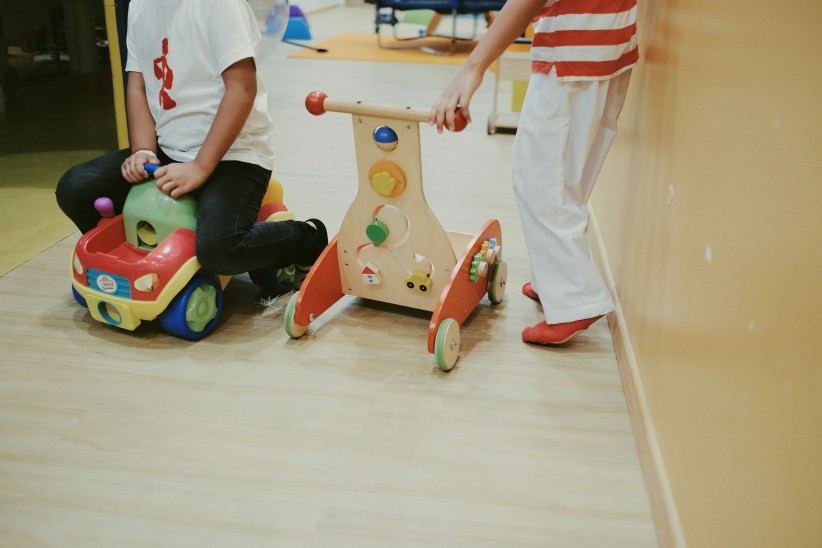Did you know that the days of Lamaze hee-hee-hoo breathing–which consist of short, quick breaths–are falling into the past? Today, more women are practicing deep belly breathing during the labor and delivery process. As a labor support doula, I have seen firsthand that this is what works best. I believe it is one of the most powerful comfort measures a woman can use while going through labor and delivery.
The reason I like deep belly breathing is because it helps “turn on” the parasympathetic nervous system, which is responsible for our rest-and-relax response (as opposed to the autonomic nervous system, which controls our fight-or-flight response). The body responds to the parasympathetic nervous system by slowing the heart rate and decreasing blood pressure while increasing the release of endorphins.
Conversely, I have found that patterned or coached breathing (i.e. the “hee-hee-hoo” of traditional Lamzae)–while it can have a positive effect by creating distraction–can also cause short, shallow breathing, and potentially hyperventilation, muscle tension, and anxiety.
There may be times during labor–i.e. the transition period, resisting the urge to push, during the pushing stage, or as the baby’s head is crowning–when deep breathing is challenging. The breath may end up short and shallow, blown out, or what I call “defused.” However, if the intention is still to try and take a deep breath, even though it may not come to fruition, the mother gains the benefits of it. She will feel more focused and relaxed by even attempting deep breathing.
Another benefit to the deep breathing method is that you can use it differently depending on the task at hand. When faced with a challenging situation in which you may need a little more strength, such as getting through the height of a contraction, focusing on the inhale can provide you with more energy or prana. The other side of the breath is the exhalation (rechak), which cools and relaxes the body and mind. Focusing on the exhale can help remind women that instead of tightening their body when feeling a lot of sensation, they can instead use this release of breath to try and surrender to the discomfort.
Some women like to count their breaths: 4 counts to inhale, 4 counts to exhale, and so forth. This type of breathing is often used in yoga and is known as sama vritti pranayamaor or even-fluctuation breathing. In this case, one still receives the helpful effects of deep breathing while finding a distraction or focal point within the breath.
I also teach a variation of viloma breathing, or 3-part breathing. This involves breathing into the belly, then drawing a little more breath into the ribcage, allowing the ribs to widen all the way up to the collarbone. Then, you exhale from the top downward, letting the air out from the ribcage, allowing the ribs to slide closer together and the belly to deflate, gently drawing the navel towards the spine.
Another technique to explore is exhaling with vocalization: “hmmm…ahhh…oooh…shhhh.” Again, this encourages a commitment to a long, deep inhale and long, slow exhale.
However much I believe in the benefits of deep breathing, it is really up to each woman to discover which breathing techniques are most effective for them at any given moment. You may find yourself jumping between several techniques and discovering usefulness for each at different points of your labor. The most important thing is to commit to your breath and trust that it will help you.























